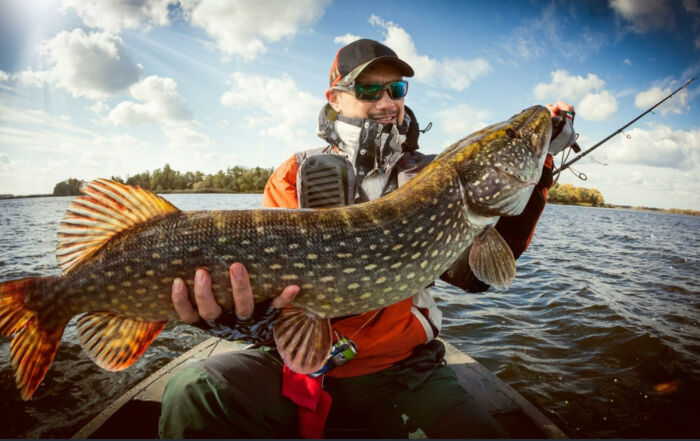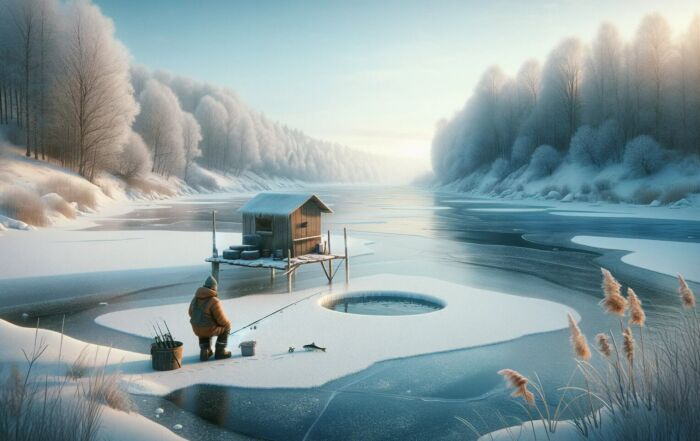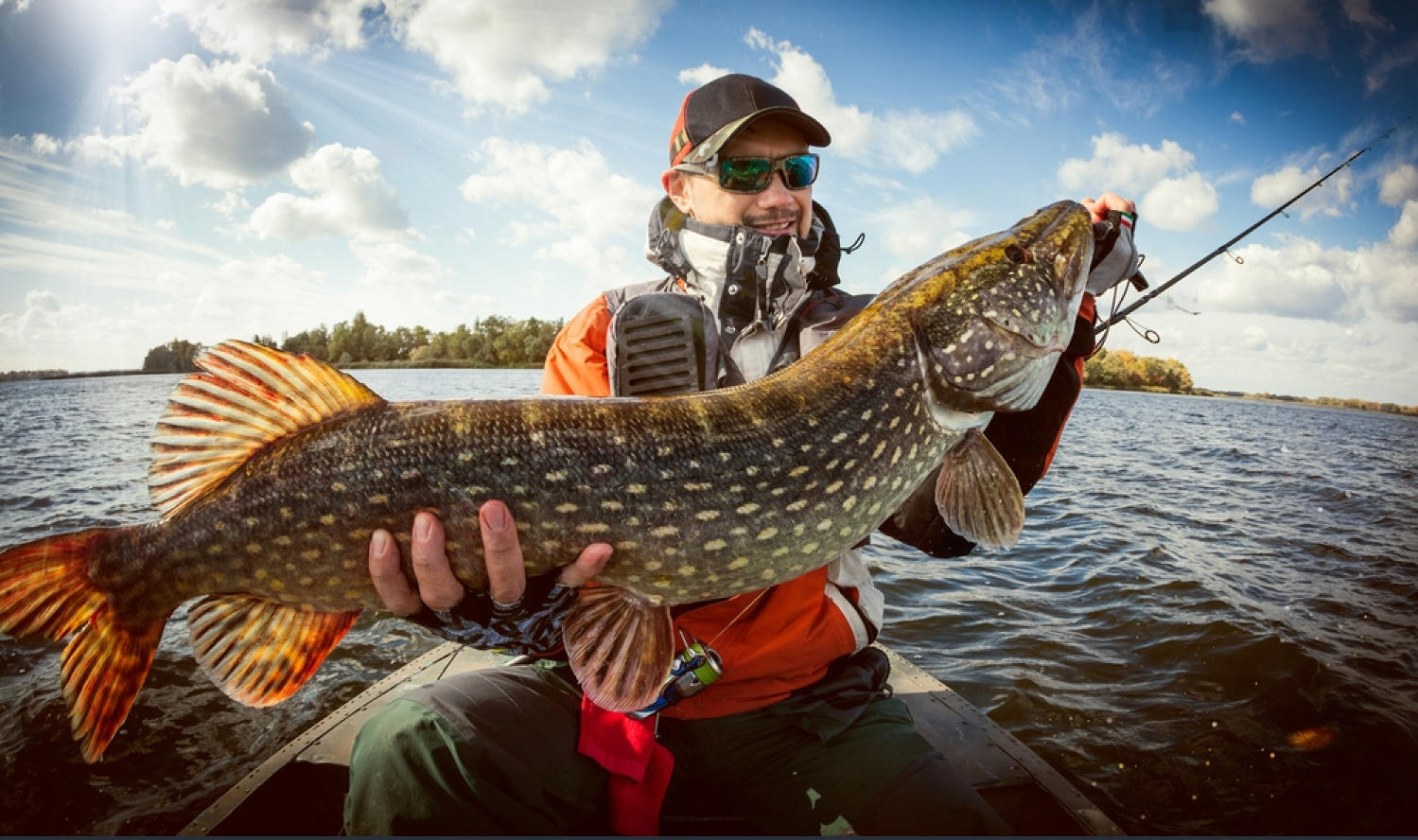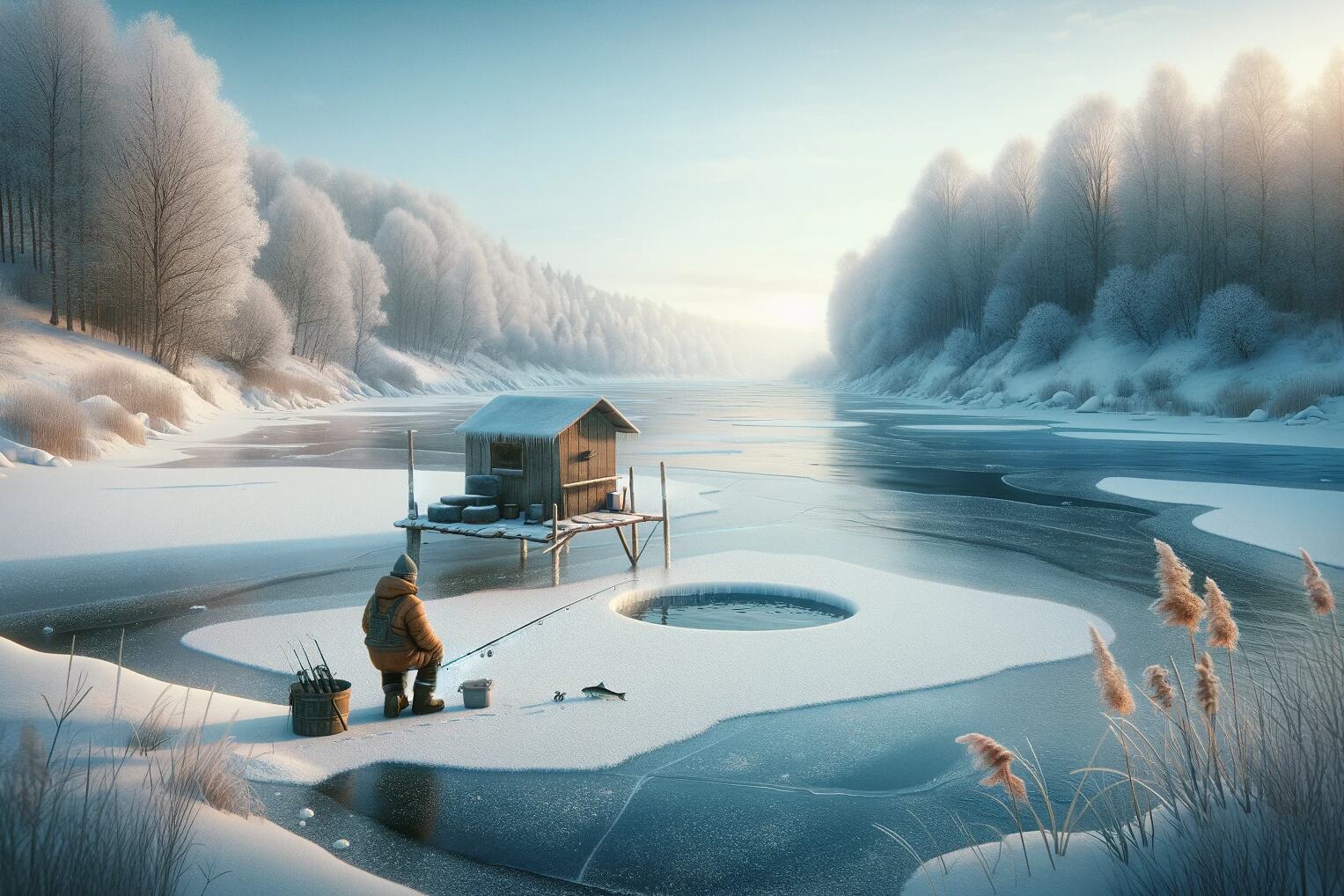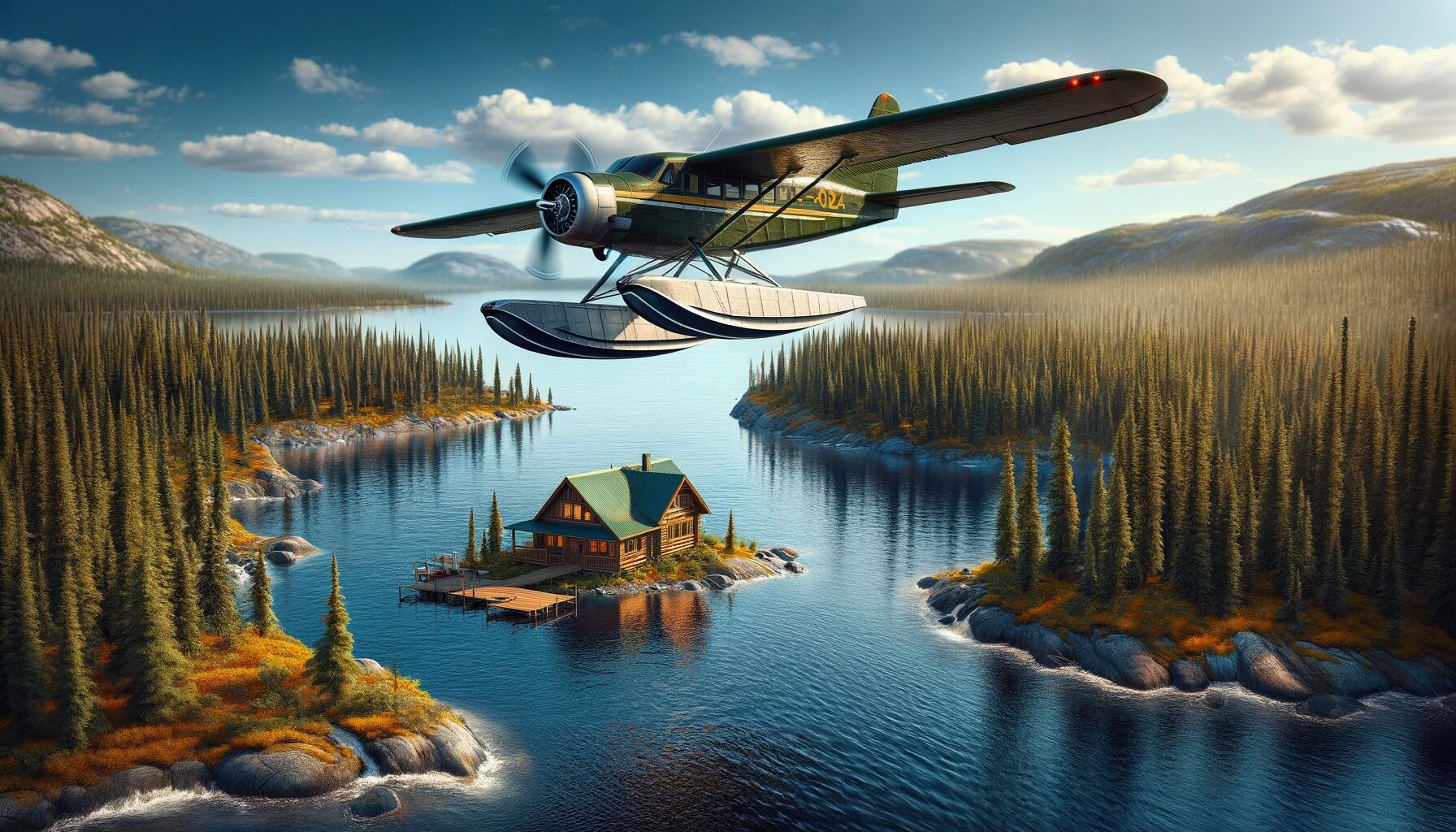Fall Pike Fishing
Picture this: It’s a crisp fall day, and just like eager fans gathering around the field at a high-energy high school football game, there’s a similar buzz happening beneath the water’s surface. Northern pike, those toothy predators, are assembling in anticipation. But they’re not there for touchdowns or halftime shows; they’re ready to ambush and feast on their prey.
Yes, autumn transforms the waters into a bustling stadium of activity, making it the ultimate season to find and catch these magnificent creatures. Let’s dive into this underwater spectacle and uncover the secrets to making the most of this fall frenzy!
Why Fall is a Pike Party
So, what makes fall such a fiesta for these toothy critters? Well, several factors come into play. First, the cooling water temperatures trigger a primal instinct in the pike. They know winter is approaching, and it’s time to stock up on energy. It’s like the ultimate pre-hibernation feast, and the pike are eager to fill their bellies.
Secondly, their prey, including yellow perch and walleye, are also transitioning to their deep-water fall locations. Pike, the opportunistic predators, follow suit, tracking their prey with precision. It’s a buffet laid out for them, and they’re ready to indulge.
Moreover, unlike the late winter and early spring, when spawning might distract them, fall sees the pike with a one-track mind: eat, eat, and eat some more. Their aggressive feeding makes them more likely to strike at lures, turning the fall waters into a playground for anglers.
Location, Location, Location!
Like any epic party, the success of your fishing trip depends heavily on finding the right spot. It’s all about being at the right place at the right time. And when it comes to fall pike fishing, knowing where these underwater predators are likely to congregate is half the battle won.
Tracking the Pike’s Party Spots
Northern pike are creatures of habit, and during the fall, they’re on the move. They transition from their summer haunts, leaving the deep weed edges and main lake structures, and head towards specific gathering spots. They’ve got an exclusive invite to the hottest party in town, and they’re all making a beeline for it.
To track these party spots, note the location of the best late-summer spots. Then, identify the nearest main lake or island points that break into deep water. These points act like underwater highways that pike use to navigate and find food.
If there’s an associated ledge or feeding flat in 10 to 20 feet of water, that’s even better. These areas become the VIP sections of the pike party, where the action is non-stop.
Contrary to what some anglers believe, the migration out of the back bays isn’t due to a receding weed line or a decline in oxygen levels. Pike are simply following their food, tracking prey like yellow perch and walleye as they move to deep-water fall locations.
And here’s the kicker: once you’ve found one of these pike party spots, it’s like striking gold. These locations will remain productive year after year as the pike returns to them every fall like clockwork.
So, it’s time to put on your detective hats and track down these party spots. With a keen eye and a bit of strategy, you’ll be right in the middle of the action, ready to reel in those big, beautiful pike!
Pro Tips for Fall Pike Fishing Hot Spots
Finding the perfect pike party spot might seem daunting, but fear not! We have some pro tips to help you zero in on those hotspots and make your fall pike fishing expedition successful.
Map It Out: Before you even hit the water, take some time to study lake maps and charts. Look for areas where shallow waters transition into deeper zones. These are potential highways for pike on the move.
Follow the Food: Remember, pike are there for the feast. Identifying areas abundant in prey, like yellow perch and walleye, can lead you straight to the pike. Pay attention to underwater structures and currents that might attract schools of smaller fish.
Seasonal Shifts: Keep in mind the seasonal shifts. As fall progresses, pike will move from the shallows to deeper waters. Adjust your search accordingly, starting with shallower spots early in the season and gradually moving deeper.
Weather Watch: Weather conditions can significantly influence pike behavior. On windy days, pike might move to windblown shores where prey is pushed by the current. Please don’t shy away from a bit of wind; it could lead you to a pike party!
Ask the Locals: Sometimes, the best intel comes from local anglers and bait shops. Ask for advice or strike up a conversation. Local knowledge can be invaluable in pinpointing those elusive pike hotspots.
Trust Your Tech: Modern fish finders and sonar technology can be game-changers. Use them to identify underwater structures, depth changes, and even schools of fish that could attract pike.
Patience Pays Off: Finally, remember that finding the perfect spot might take time. Be patient, stay observant, and keep experimenting with different locations.
Perfect Conditions for Fall Pike Fishing
Fall ushers in a unique set of conditions that create a perfect storm for fishing enthusiasts. The environment undergoes a transformation, and the waters that were once challenging become a haven for anglers. The combination of temperature, wind, and natural cycles creates an atmosphere akin to a fiesta, where northern pike are the guests of honor, and anglers are invited to join the celebration.
Are you ready to join the fall pike fishing fiesta and experience the thrill of reeling in these magnificent creatures? Cast your line, seize the adventure, and make unforgettable memories on the water! Book your next fishing trip with us!
Timing the Temperature
One of the critical factors that contribute to this fishing bonanza is the water temperature. As autumn progresses, the water begins to cool down, setting the stage for a series of events that are favorable for fishing. The shift in temperature acts as a catalyst, signaling to the northern pike that it’s time to indulge in a feeding frenzy.
The magic begins when the water temperature drops below 15°C (59°F). This initial drop is like an alarm clock for the pike, nudging them to start their pre-winter feast. The activity peaks when the temperature hovers around 10°C (50°F), creating an environment that is teeming with opportunities for anglers.
This temperature range is particularly significant because it aligns with the pike’s natural instincts to feed and prepare for the colder months. The pike become less cautious and more aggressive in their pursuit of prey, making them more likely to strike at lures and baits.
Timing your fall pike fishing expeditions to coincide with these temperature drops can significantly enhance your chances of success. By paying attention to weather patterns and monitoring water temperatures, anglers can strategically plan their outings to maximize this favorable window.
It’s important to note that this pattern continues until the temperature drops to around 7°C (45°F), especially when accompanied by unseasonably warm weather. By late fall, the pike will have transitioned to their winter locations, marking the end of the fiesta.
Casting Secrets
Mastering the art of casting can significantly elevate your fall pike fishing experience, turning a day on the water into a series of triumphant catches. When it comes to fall pike fishing, there are a few casting secrets that can transform you from an amateur angler to a pike-catching pro.
Play with Depth: One of the secrets to successful casting is understanding the depth at which pike are feeding. In the fall, pike moves to windblown shores and points that break into deep water. Casting up shallow and retrieving your lure over the break can yield fantastic results.
The Art of Retrieval: How you retrieve your lure can make all the difference. During the fall frenzy, there’s no need for erratic directional changes or overly complex retrieval techniques. Pike are eager and ready to bite, so a steady, consistent retrieve often works wonders.
Choose the Right Lure: Your choice of lure can significantly impact your casting success. Opt for lures that mimic the pike’s natural prey, such as paddle tail swimbaits or spoons. The realistic movement and appearance of these lures can entice pike to strike.
Mind the Wind: A good bus stop becomes an excellent bus stop when it’s exposed to wind and waves. Casting into the wind can help your lure reach the desired depth more quickly. It can also create a more natural presentation, increasing your chances of attracting a pike.
Perfect Your Technique: Practice makes perfect, and this is especially true for casting. Work on your casting accuracy and distance to ensure your lure lands in the prime pike hotspots. Pay attention to your rod’s action and ensure that your casts are smooth and controlled.
Observe and Adapt: Pay attention to the water conditions, the behavior of the pike, and any patterns you observe. If a particular casting technique or lure isn’t yielding results, feel free to switch things up and try something new.
Stay Patient and Persistent: Sometimes, the secret to successful casting lies in patience and persistence. Pike can be finicky, and it may take a few tries to find the right spot and technique that works.
Gear Up for Fall Pike Fishing
Equipping yourself with the right gear is akin to receiving an exclusive invitation to the most happening party in town. When it comes to fall pike fishing, having the right lures, rods, reels, and lines can make all the difference. It’s about being prepared and ensuring your tackle box has the essentials to make your fall pike fishing expedition successful.
Lures that Pike Can’t Resist
Selecting the right lure is crucial in enticing those elusive pike to bite. Here are some lures that are practically irresistible to pike during the fall frenzy:
Paddle Tail Swimbaits: These soft plastic lures mimic the movement of small fish, making them an irresistible choice. Their lifelike swimming action and realistic appearance can trigger the predatory instincts of pike.
Spoons: Spoons are classic pike lures that have stood the test of time. Their wobbling and flashing action can attract pike from a distance. Opt for larger, heavier spoons in silver or gold finishes to mimic the appearance of baitfish.
Crankbaits: Crankbaits can dive to different depths and mimic the movement of injured prey, making them highly effective. Choose models resembling local forage, such as perch or walleye patterns.
Spinnerbaits: The vibration and flash of spinnerbaits can be highly enticing to pike. Their durable design also allows them to withstand the pike’s sharp teeth.
Topwater Lures: When the water is still relatively warm early in the fall, topwater lures can provide thrilling action. The surface commotion can attract aggressive pike looking for an easy meal.
Jigs: Jigs tipped with soft plastics or natural bait can be highly effective, especially when fishing in deeper waters. Their versatility allows you to experiment with different retrieval techniques.
Bucktail Spinners: These lures are known for their ability to trigger strikes from pike. Combining a pulsating skirt and a spinning blade creates an irresistible presentation.
Lipless Rattle Baits: The loud rattling and tight wobbling action of these lures can be particularly effective in murky waters or low-light conditions.
Customization is Key: Be bold and customize your lures by adding trailers, changing hooks, or experimenting with different colors and patterns.
Rods, Reels, and Lines – Oh My!
Equipping yourself with the right gear is crucial when you’re gearing up for a successful fall pike fishing expedition. Let’s delve into the world of rods, reels, and lines to ensure you’re well-prepared for the fall pike party.
Rods:
Light-Action Muskie Rods: These rods are perfect for casting larger lures and handling aggressive pike strikes. They balance sensitivity and strength, allowing you to feel the bite and fight the fish effectively.
Medium-Heavy-Action Bass Rods: These rods are versatile and can handle a variety of lures. They provide enough backbone to haul those trophy pikes while ensuring a fun and challenging fight.
Reels:
Baitcasting Reels: Baitcasting reels offer precision and control, allowing you to cast your lure exactly where you want it. Look for reels with a smooth drag system and a high line capacity.
Spinning Reels: For lighter lures and finesse fishing, a quality spinning reel can be a great choice. They are easy to use and effective when targeting pike in shallower waters.
Lines:
Braided Line: Braided lines are popular for pike fishing due to their high strength and minimal stretch. This allows for better hooksets and increased sensitivity to feel subtle bites.
Monofilament Line: Monofilament is versatile and offers some stretch, which can be beneficial when fighting a large pike. It’s also less visible in the water compared to braided lines.
Fluorocarbon Leaders: Pike have sharp teeth, so using a durable leader is essential. Fluorocarbon leaders are abrasion-resistant and nearly invisible underwater, making them an excellent choice.
Accessories:
Swivels and Snaps: These allow for quick lure changes and can prevent line twists, especially when using spinning lures.
Combining the Right Gear: The key to success lies in combining the right rod, reel, and line to match your fishing style, the lures you’re using, and the conditions you’re facing. By understanding the nuances of each piece of equipment and selecting the right gear, you’ll be well-equipped to tackle the challenges and joys of fall pike fishing.
Conclusion
So, just as fall brings the thrill of spirited high school football games, it also ushers in a prime time to dive into the world of fall pike fishing. It’s a season where passions ignite under the Friday night lights or at the edge of a serene lake.
So, what are you waiting for? Grab your gear, and head to the water. Let’s make this fall a season filled with great catches and unforgettable memories. Happy fishing, everyone!

